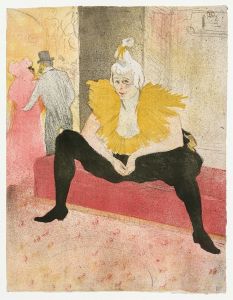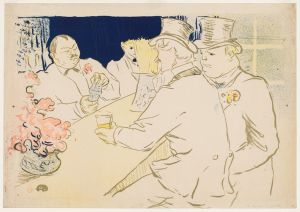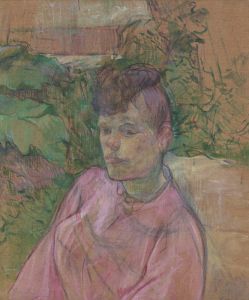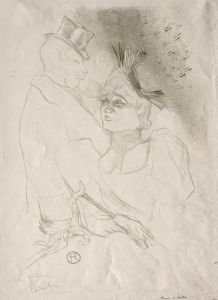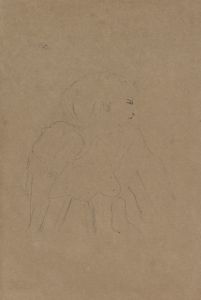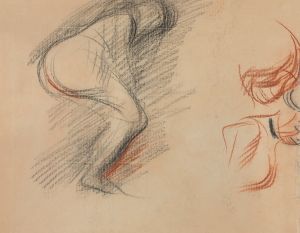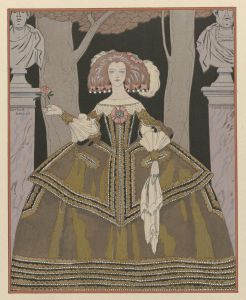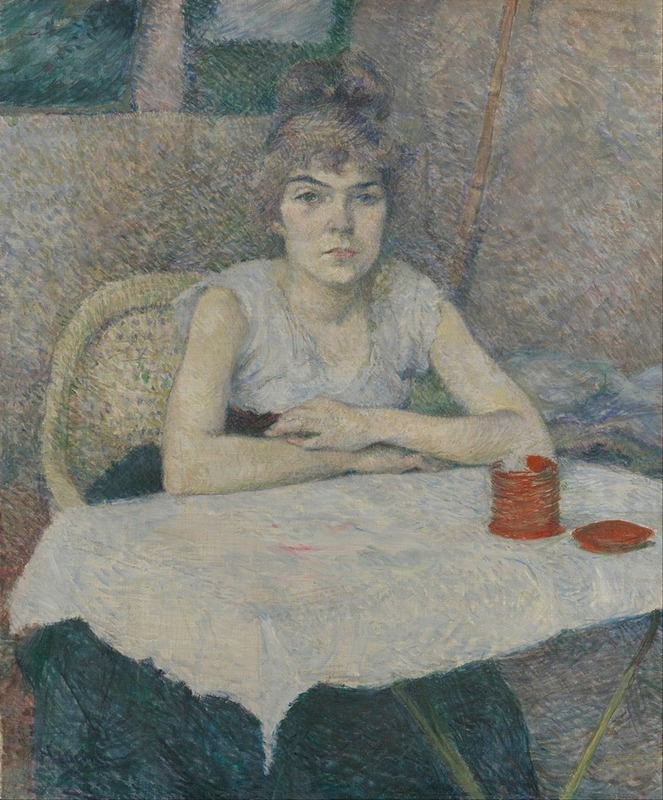
Young woman at a table, ‘Poudre de riz’
A hand-painted replica of Henri de Toulouse-Lautrec’s masterpiece Young woman at a table, ‘Poudre de riz’, meticulously crafted by professional artists to capture the true essence of the original. Each piece is created with museum-quality canvas and rare mineral pigments, carefully painted by experienced artists with delicate brushstrokes and rich, layered colors to perfectly recreate the texture of the original artwork. Unlike machine-printed reproductions, this hand-painted version brings the painting to life, infused with the artist’s emotions and skill in every stroke. Whether for personal collection or home decoration, it instantly elevates the artistic atmosphere of any space.
Henri de Toulouse-Lautrec's painting Young Woman at a Table, ‘Poudre de riz’ is a notable work by the French Post-Impressionist artist, created in 1887. The title, which translates to "Rice Powder," refers to the cosmetic powder commonly used by women during the late 19th century to achieve a pale complexion. This painting exemplifies Lautrec's interest in capturing intimate, everyday moments, often focusing on women and their private routines.
The artwork depicts a young woman seated at a table, engaged in the act of applying rice powder to her face. The scene is rendered with Lautrec's characteristic loose brushwork and attention to detail, which conveys both the physicality of the subject and the atmosphere of the setting. The muted color palette, dominated by soft tones, enhances the intimate and contemplative mood of the piece. Lautrec's ability to portray his subjects with empathy and realism is evident in the way he captures the woman's delicate features and focused expression.
Henri de Toulouse-Lautrec (1864–1901) was a prominent figure in the Post-Impressionist movement, known for his depictions of Parisian nightlife, including cabarets, theaters, and brothels. He was particularly skilled at portraying the human figure, often emphasizing the individuality and personality of his subjects. While many of his works focus on the vibrant social scenes of Montmartre, Poudre de riz is an example of his quieter, more introspective compositions.
The painting reflects Lautrec's fascination with the rituals and routines of women, a recurring theme in his work. Rather than idealizing his subjects, he often presented them in unguarded moments, offering a glimpse into their lives. This approach set him apart from many of his contemporaries and contributed to his reputation as a keen observer of human behavior.
Young Woman at a Table, ‘Poudre de riz’ is housed in the Musée d'Orsay in Paris, France. The museum, renowned for its extensive collection of 19th-century art, includes several works by Toulouse-Lautrec. This painting is considered an important example of his ability to combine technical skill with a deep sensitivity to his subjects.
No further specific details about the identity of the woman or the exact circumstances of the painting's creation are documented. As with many of Lautrec's works, the focus remains on the universal themes of humanity and the fleeting moments of daily life.






